Cryptocurrencies have their own unique features, advantages, challenges and jargon that can be confusing for beginners and experts alike.
So, we have created this ultimate crypto glossary, where you can find all the crypto terms you need to know to navigate the crypto world, keep yourself safe and agile, and invest in crypto like a pro.
## A
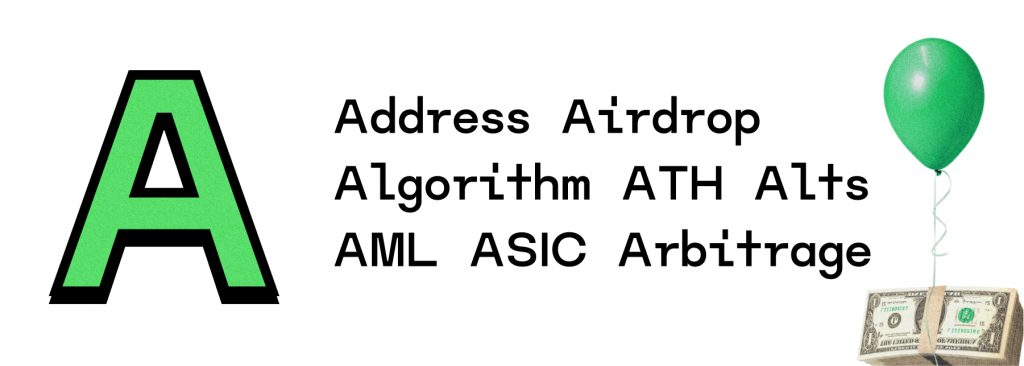
– Address: A unique identifier that represents a location on the blockchain where a cryptocurrency is stored. It is usually a string of alphanumeric characters that can be shared with others to send or receive payments. For example, a Bitcoin address looks like this: 1BvBMSEYstWetqTFn5Au4m4GFg7xJaNVN2
– Airdrop: A marketing strategy that involves distributing free tokens or coins to a large number of people, usually to promote a new project or increase its adoption. Airdrops can be done randomly, based on certain criteria, or in exchange for completing tasks or sharing information.
– Algorithm: A set of rules or instructions that are followed by a computer program to perform a specific task or solve a problem. Cryptocurrencies use different algorithms for various purposes, such as generating new coins, validating transactions, securing the network, etc.
– All-Time High (ATH): The highest price that a cryptocurrency has ever reached in its history. For example, Bitcoin’s ATH was $64,863 on April 14, 2021.
– All-Time Low (ATL): The lowest price that a cryptocurrency has ever reached in its history. For example, Bitcoin’s ATL was $0.06 on July 18, 2010.
– Altcoin: Any cryptocurrency other than Bitcoin, which is the first and most popular one. Altcoins usually have different features, goals, use cases and communities than Bitcoin. Some examples of altcoins are Ethereum, Litecoin, Ripple, Dogecoin, etc.
– Anti-Money Laundering (AML): A set of laws and regulations that aim to prevent criminals from using cryptocurrencies or other financial systems to hide the origin or destination of their illicit funds. AML measures usually involve verifying the identity and source of funds of customers, reporting suspicious activities and cooperating with authorities.
– Application-Specific Integrated Circuit (ASIC): A specialized hardware device that is designed to perform a specific task very efficiently. In the context of cryptocurrencies, ASICs are often used for mining, which is the process of generating new coins and securing the network by solving complex mathematical problems.
– Arbitrage: The practice of taking advantage of price differences between different markets or exchanges for the same asset. For example, if Bitcoin is trading at $50,000 on exchange A and $51,000 on exchange B, an arbitrageur can buy Bitcoin on exchange A and sell it on exchange B for a profit of $1,000 per coin.
## B
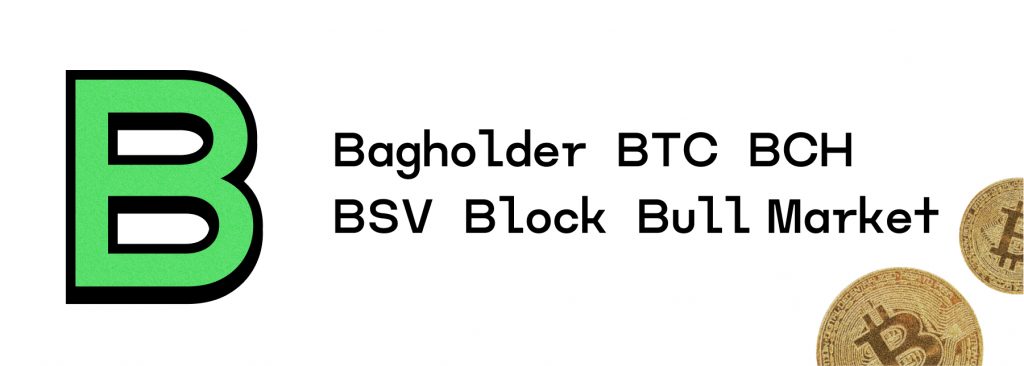
– Bagholder: A term used to describe someone who holds a large amount of a cryptocurrency that has decreased significantly in value and is unlikely to recover. The term implies that the person is stuck with a worthless or heavy bag of coins that they can’t sell or use.
– Bear Market: A market condition where the prices of cryptocurrencies are falling or expected to fall for a prolonged period of time. The term comes from the analogy of a bear swiping its paw downward to attack its prey. A bear market is usually accompanied by low trading volume, negative sentiment and pessimism among investors.
– Bitcoin: The first and most popular cryptocurrency, created by an anonymous person or group known as Satoshi Nakamoto in 2009. Bitcoin is based on a peer-to-peer network that allows anyone to send and receive payments without intermediaries or central authorities. Bitcoin has a limited supply of 21 million coins and uses a proof-of-work algorithm to secure its network and generate new coins.
– Bitcoin Cash: A cryptocurrency that was created in 2017 as a result of a hard fork from Bitcoin. Bitcoin Cash aims to increase the scalability and usability of Bitcoin by increasing the block size limit from 1 MB to 32 MB, allowing more transactions per second and lower fees.
– Bitcoin SV: A cryptocurrency that was created in 2018 as a result of another hard fork from Bitcoin Cash. Bitcoin SV stands for Bitcoin Satoshi Vision and claims to follow the original vision and protocol of Satoshi Nakamoto, the creator of Bitcoin. Bitcoin SV has a block size limit of 128 MB and supports various features such as smart contracts, tokens and data storage.
– Block: A unit of data that contains a record of transactions and other information, such as the block number, timestamp, nonce, hash, etc. Blocks are linked together in chronological order to form a blockchain, which is the underlying ledger system of cryptocurrencies.
– Blockchain: A distributed ledger system that records and verifies transactions in a secure and transparent way. A blockchain consists of a series of blocks that are linked together by cryptographic hashes, forming a chain that is immutable and resistant to tampering. Each block contains a set of transactions that are validated by the network participants, who are also known as nodes.
– Block Explorer: A tool or website that allows users to view and analyze the information on a blockchain, such as the transactions, addresses, balances, blocks, hashes, etc. Block explorers can be used to track the history and status of a transaction, verify the authenticity of a transaction, monitor network activity and performance, etc.
– Block Reward: The amount of cryptocurrency that is awarded to the miner or node that successfully creates a new block on the blockchain. The block reward serves as an incentive for miners to secure the network and generate new coins. The block reward usually decreases over time or after a certain number of blocks are mined, following a predetermined schedule or algorithm.
– Bull Market: A market condition where the prices of cryptocurrencies are rising or expected to rise for a prolonged period of time. The term comes from the analogy of a bull thrusting its horns upward to attack its opponent. A bull market is usually accompanied by high trading volume, positive sentiment and optimism among investors.
## C
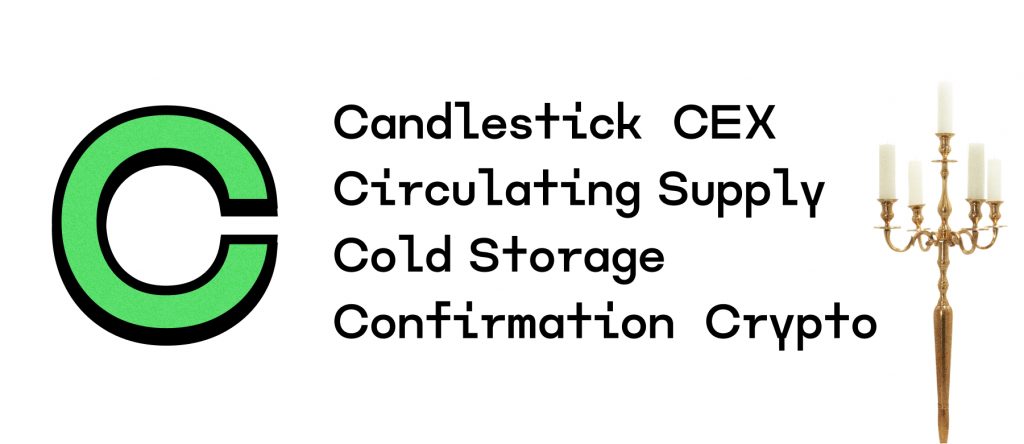
– Candlestick Chart: A type of chart that is commonly used to display the price movements of cryptocurrencies over time. A candlestick chart consists of multiple candles, each representing a specific time interval (such as 1 hour, 1 day, 1 week, etc.). Each candle has a body and two wicks. The body shows the opening and closing prices of the interval, while the wicks show the highest and lowest prices. The colour of the body indicates whether the price increased or decreased during the interval. A green or white body means that the price closed higher than it opened, while a red or black body means that the price closed lower than it opened.
– Centralized Exchange (CEX): A type of cryptocurrency exchange that is operated by a central entity or company that acts as an intermediary between buyers and sellers. A centralized exchange usually requires users to register an account and verify their identity before they can trade. A centralized exchange also holds the users’ funds and private keys on its platform, which makes it vulnerable to hacking, theft or regulation.
– Circulating Supply: The amount of cryptocurrency that is currently available in the market and can be traded or used. The circulating supply is usually lower than the total supply or the maximum supply, as some coins may be locked, burned, lost or not yet mined or released.
– Cold Storage: A method of storing cryptocurrency offline in a secure device or medium that is not connected to the internet. Cold storage reduces the risk of hacking, theft or loss of funds due to malware, phishing or hardware failure. Examples of cold storage include hardware wallets, paper wallets, USB drives, etc.
– Confirmation: The process of verifying and finalizing a transaction on the blockchain. Confirmation occurs when a new block is added to the blockchain that contains the transaction. The more confirmations a transaction has, the more secure and irreversible it is. Different cryptocurrencies have different confirmation times and requirements depending on their network speed and consensus mechanism.
– Consensus Mechanism: A set of rules or protocols that govern how the nodes on a blockchain network agree on the validity and order of transactions and blocks. A consensus mechanism ensures that all nodes have a consistent and updated version of the blockchain and prevents malicious actors from tampering with or disrupting the network. There are different types of consensus mechanisms, such as proof-of-work (PoW), proof-of-stake (PoS), delegated proof-of-stake (DPoS), proof-of-authority (PoA), etc.
– Cryptocurrency: A digital or virtual currency that uses cryptography to secure its transactions and control its creation and distribution. Cryptocurrencies operate on decentralized networks that are based on blockchain technology. Cryptocurrencies have no physical form and are not issued or backed by any central authority or government. Cryptocurrencies can be used for various purposes, such as peer-to-peer payments, remittances, online shopping, gaming, investing, etc.
## D
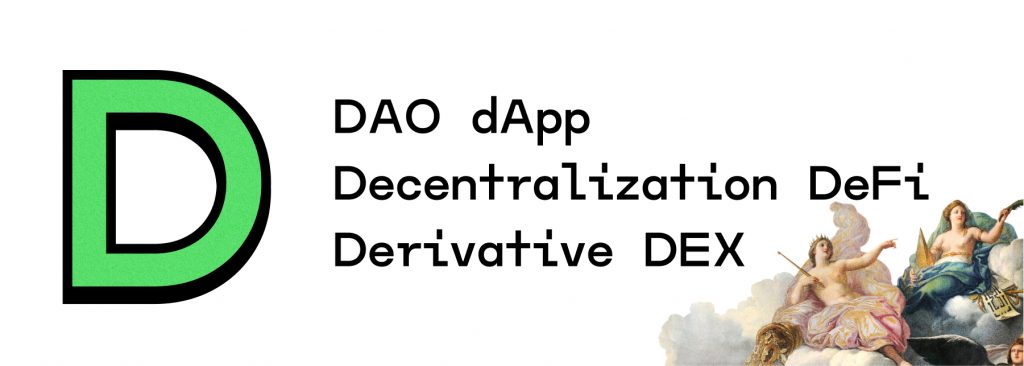
– DAO: An acronym for Decentralized Autonomous Organization, which is an entity or organization that is run by smart contracts and code rather than by human managers or intermediaries. A DAO operates on a set of rules that are encoded on the blockchain and executed automatically by the network. A DAO can have various goals and functions, such as providing a service, managing a fund, governing a community, etc. A DAO can also have various participants and stakeholders, such as creators, contributors, users, investors, etc. A DAO can be seen as a new form of organization that is more transparent, efficient and democratic than traditional organizations.
– DApp: An acronym for Decentralized Application, which is an application that runs on a decentralized network, such as a blockchain or a peer-to-peer network. A DApp can have various features and functions, such as gaming, social media, finance, etc. A DApp usually has a front-end user interface that interacts with a back-end smart contract or protocol that handles the logic and data of the application.
– Decentralization: The process or state of distributing or dispersing power, authority or control from a central point or entity to multiple or independent points or entities. In the context of cryptocurrencies, decentralization refers to the characteristic of having no central authority or intermediary that governs or regulates the network, the transactions, the supply or the value of the currency. Decentralization is achieved by using a distributed network of nodes that collectively maintain and secure the blockchain and its data.
– DeFi: An acronym for Decentralized Finance, which is a movement or ecosystem that aims to provide various financial services and products using decentralized platforms and protocols, such as blockchain, smart contracts, DApps, etc. DeFi services and products include lending, borrowing, trading, investing, saving, insurance, etc. DeFi aims to create a more open, transparent, inclusive and efficient financial system that is accessible to anyone with an internet connection and a compatible device.
– Derivative: A type of financial contract or instrument that derives its value from the performance or behaviour of an underlying asset, such as a cryptocurrency, a stock, a commodity, an index, etc. Derivatives can be used for various purposes, such as hedging, speculating, arbitraging, etc. Examples of derivatives include futures, options, swaps, contracts for difference (CFDs), etc.
– DEX: An acronym for Decentralized Exchange, which is a type of cryptocurrency exchange that operates on a decentralized network, such as a blockchain or a peer-to-peer network. A DEX allows users to trade cryptocurrencies directly with each other without the need for intermediaries or custodians. A DEX usually does not require users to register an account or verify their identity before they can trade. A DEX also does not hold the users’ funds or private keys on its platform, which makes it more secure and resistant to hacking, theft or regulation.
– Difficulty: A measure of how hard it is to mine a new block on the blockchain. The difficulty adjusts periodically according to the network’s hash rate and the target block time. The higher the difficulty, the more computational power and time it takes to find a valid block. The difficulty ensures that the average time between blocks remains consistent and that the supply of new coins is predictable and controlled.
– Digital Signature: A cryptographic technique that allows a user to prove their identity and ownership of a message or transaction without revealing their private key. A digital signature consists of two parts: a public key and a private key. The public key is used to verify the signature and can be shared with anyone. The private key is used to generate the signature and must be kept secret by the user. A digital signature ensures that the message or transaction has not been altered or tampered with by anyone else.
## E
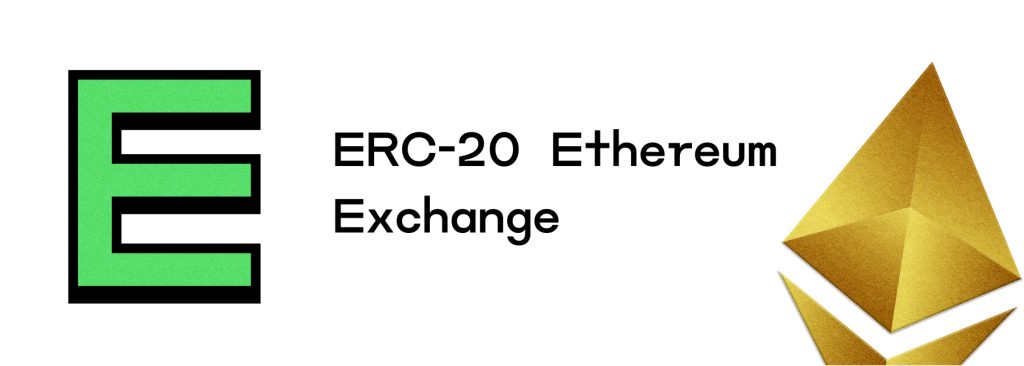
– ERC-20: A technical standard or protocol for creating and issuing tokens on the Ethereum blockchain. ERC-20 defines a set of rules and functions that a token must follow in order to be compatible and interoperable with other ERC-20 tokens and platforms. ERC-20 tokens are widely used for various purposes, such as utility tokens, governance tokens, stablecoins, etc.
– Ethereum: A decentralized platform that allows users to create and run smart contracts and decentralized applications (DApps) without any downtime, censorship, fraud or interference. Ethereum is powered by its native cryptocurrency called Ether (ETH), which is used to pay for transaction fees and computational services on the network. Ethereum also supports various tokens and protocols that are based on its blockchain technology.
– Exchange: A platform or service that allows users to buy, sell or trade cryptocurrencies with other cryptocurrencies or fiat currencies. Exchanges can be classified into two types: centralized exchanges (CEX) and decentralized exchanges (DEX). Centralized exchanges are operated by a central entity or company that acts as an intermediary between buyers and sellers. Decentralized exchanges are operated by a decentralized network that allows users to trade directly with each other without intermediaries.
## F
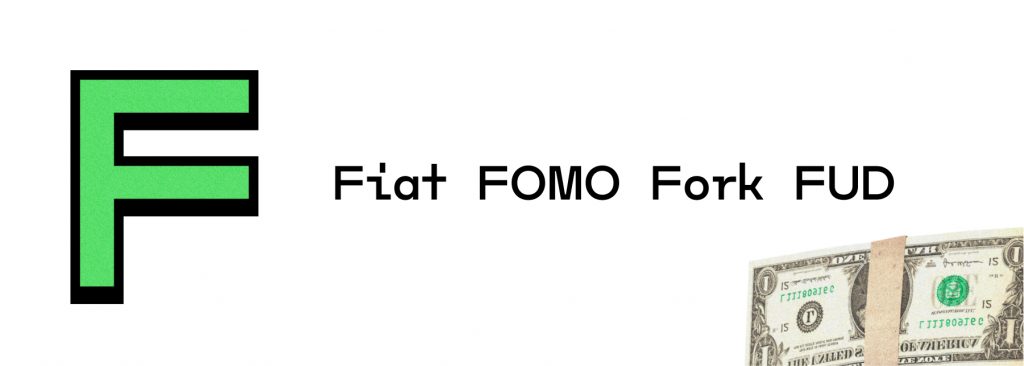
– Fiat Currency: A type of currency that is issued and backed by a government or central authority. Fiat currencies have no intrinsic value and are not backed by any physical commodity or asset. Fiat currencies rely on the trust and faith of the public and the government to maintain their value and stability. Examples of fiat currencies include the US dollar (USD), euro (EUR), Japanese yen (JPY), etc.
– FOMO: An acronym for Fear Of Missing Out, which is a psychological phenomenon that occurs when a person feels anxious or regretful about not participating in a potentially profitable or rewarding opportunity, such as buying or selling a cryptocurrency. FOMO can cause a person to act irrationally or impulsively, often resulting in poor decisions or losses.
– Fork: A change or update to the rules or protocol of a blockchain network that creates a new version or branch of the blockchain. Forks can be classified into two types: soft forks and hard forks. Soft forks are backwards-compatible, meaning that the new version can still communicate and interact with the old version. Hard forks are not backward-compatible, meaning that the new version and the old version become separate and incompatible networks. Forks can occur for various reasons, such as fixing bugs, adding features, resolving disputes, etc.
– FUD: An acronym for Fear, Uncertainty and Doubt, which is a strategy or tactic that involves spreading negative or misleading information about a cryptocurrency, a project, a market or an industry in order to influence the perception and behaviour of the public. FUD can cause panic, confusion, distrust and sell-offs among investors and users.
## G

– Gas: A unit of measurement that represents the amount of computational effort or resources required to execute a transaction or a smart contract on the Ethereum network. Gas is used to pay transaction fees and to prevent spamming or abusing the network. The gas price is determined by the supply and demand of the network and can vary depending on the network congestion and the complexity of the transaction or smart contract. The gas limit is the maximum amount of gas that a user is willing to pay for a transaction or smart contract.
– Genesis Block: The first block of a blockchain, which is also known as block zero or block one. The genesis block contains the initial parameters and settings of the blockchain, such as the timestamp, the difficulty, the nonce, the hash, etc. The genesis block also usually contains a special message or data that signifies the creation or launch of the blockchain. For example, Bitcoin’s genesis block contains the text “The Times 03/Jan/2009 Chancellor on brink of second bailout for banks”.
## H

– HODL: A term that refers to the act or strategy of holding onto a cryptocurrency for a long period of time regardless of price fluctuations or market conditions. The term originated from a misspelling of the word “hold” in a forum post in 2013, where a user declared that he was “hodling” his Bitcoin despite the price crash. The term has since become an acronym for “Hold On for Dear Life” or a backronym for “Hold On, Don’t Leave”.
– Halving: An event that occurs every 210,000 blocks (approximately every four years) on the Bitcoin network, where the block reward for miners is reduced by 50%. The halving is designed to control the inflation and supply of Bitcoin by decreasing the rate of new coin creation. The halving also affects the profitability and security of mining. The last halving occurred on May 11, 2020, when the block reward was reduced from 12.5 BTC to 6.25 BTC.
## I

– ICO: An acronym for Initial Coin Offering, which is a type of crowdfunding or fundraising method that involves issuing and selling new tokens or coins to investors in exchange for cryptocurrencies or fiat currencies. ICOs are usually conducted by startups or projects that want to raise funds for developing their products or services. ICOs are often considered risky and unregulated due to the lack of oversight, transparency and accountability.
– IEO: An acronym for Initial Exchange Offering, which is a type of crowdfunding or fundraising method that involves issuing and selling new tokens or coins to investors through a cryptocurrency exchange platform. IEOs are usually conducted by startups or projects that want to raise funds for developing their products or services. IEOs are often considered safer and more reliable than ICOs due to the involvement and vetting of the exchange platform.
– IPFS: An acronym for InterPlanetary File System, which is a decentralized protocol that allows users to store and share files across a peer-to-peer network. IPFS aims to create a more efficient, secure and resilient web that is not dependent on centralized servers or intermediaries. IPFS uses cryptographic hashes to identify and locate files on the network, which ensures their integrity and availability.
## J

– JOMO: An acronym for Joy Of Missing Out, which is a psychological phenomenon that occurs when a person feels happy or satisfied about not participating in a potentially profitable or rewarding opportunity, such as buying or selling a cryptocurrency. JOMO can cause a person to act rationally or cautiously, often resulting in better decisions or outcomes.
## K

– KYC: An acronym for Know Your Customer, which is a process or requirement that involves verifying the identity and background of customers before they can use certain services or products. KYC measures are usually implemented by financial institutions, exchanges, platforms or regulators to prevent money laundering, fraud, terrorism financing or other illegal activities. KYC measures usually involve collecting and verifying personal information, such as name, address, date of birth, phone number, email, etc.
– KYT: An acronym for Know Your Transaction, which is a process or requirement that involves monitoring and analyzing the transactions and activities of customers on a blockchain network. KYT measures are usually implemented by financial institutions, exchanges, platforms or regulators to prevent money laundering, fraud, terrorism financing or other illegal activities. KYT measures usually involve using various tools or techniques, such as blockchain analytics, risk scoring, transaction tracing, etc.
## L

– Lambo: A slang term that refers to a Lamborghini, which is a luxury sports car that is often considered a symbol of wealth and success. The term is often used by cryptocurrency enthusiasts or investors to express their desire or expectation to become rich from their investments. The term is also often used as a unit of measurement to compare the value of cryptocurrencies. For example, one Bitcoin is worth about 0.5 Lambo as of June 2021.
– Ledger: A record or database that contains the history and details of transactions and balances of a cryptocurrency or a blockchain network. A ledger can be centralized or decentralized depending on who maintains and controls it. A centralized ledger is managed by a single entity or authority, such as a bank or a company. A decentralized ledger is distributed and shared among multiple entities or nodes on a network, such as a blockchain.
– Lightning Network: A second-layer solution that aims to improve the scalability and speed of Bitcoin transactions by creating a network of payment channels that operate off the main blockchain. The Lightning Network allows users to send and receive payments instantly and cheaply without congesting the main network or paying high fees. The Lightning Network uses smart contracts and cryptographic techniques to ensure the security and validity of the payments.
– Liquidity: A measure of how easily and quickly an asset can be bought or sold in a market without affecting its price. Liquidity is determined by various factors, such as supply and demand, trading volume, market depth, etc. Liquidity is important for cryptocurrencies as it affects their price stability, volatility and efficiency.
## M

– Market Cap: A measure of the total value of a cryptocurrency or a market. Market cap is calculated by multiplying the current price of a cryptocurrency by its circulating supply. For example, if Bitcoin has a price of $50,000 and a circulating supply of 18.7 million coins, its market cap is $935 billion. Market cap can be used to compare the size, rank and dominance of cryptocurrencies or markets.
– Mining: The process of generating new coins and securing the network by solving complex mathematical problems using computational power. Mining is performed by specialized hardware devices called miners or nodes that compete with each other to find a valid solution for each block. The miner or node that finds the solution first gets rewarded with newly created coins and transaction fees. Mining also ensures that the transactions and blocks on the network are valid and immutable.
– Mining Pool: A group of miners or nodes that pool their computational power and resources together to increase their chances of finding a valid solution for each block. The rewards from mining are then distributed among the pool members according to their contribution or share of work. Mining pools can help miners reduce the variance and risk of mining.
– Mining Reward: The amount of cryptocurrency that is awarded to the miner or node that successfully creates a new block on the blockchain. The mining reward consists of two parts: the block reward and the transaction fees. The block reward is the newly created coins that are generated for each block. The transaction fees are the fees that are paid by the users for sending transactions on the network. The mining reward serves as an incentive for miners to secure the network and generate new coins.
– Mnemonic Phrase: A set of words or phrases that are used to generate or restore a private key or a wallet. A mnemonic phrase is usually derived from a mathematical algorithm that converts a random sequence of bits into human-readable words. A mnemonic phrase is also known as a seed phrase, recovery phrase or backup phrase. A mnemonic phrase is usually 12, 18 or 24 words long and must be kept secret and safe by the user.
## N

– Node: A computer or device that participates in a blockchain network by running its software and protocol. A node can have various roles and functions depending on its type and configuration. Some nodes store and validate the entire blockchain data (full nodes), some nodes only store and validate a portion of the blockchain data (light nodes), some nodes create and broadcast transactions (wallet nodes), some nodes generate new coins and secure the network (miner nodes), etc.
– Nonce: A number that is used once or only for a specific purpose. In the context of cryptocurrencies, a nonce is a random number that is used by miners or nodes to find a valid solution for each block. The nonce is combined with the block data and hashed to produce a unique output that must meet a certain difficulty target or criteria. The nonce is then included in the block header and verified by the network.
## O
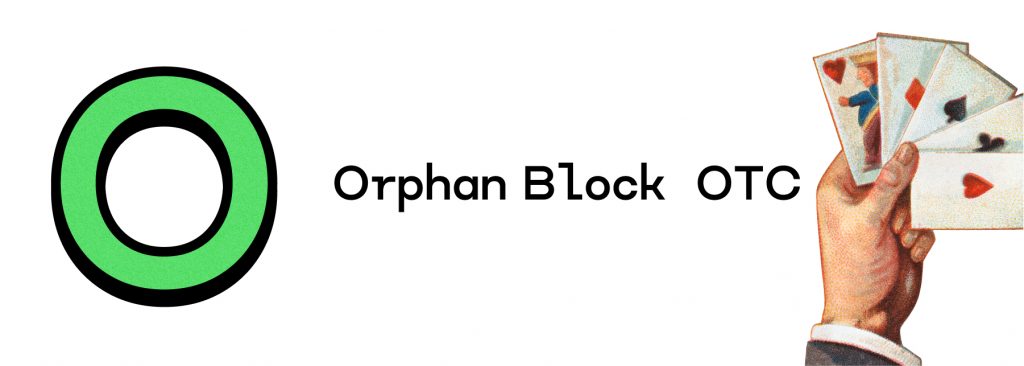
– Orphan Block: A block that is not part of the longest or main chain of the blockchain. An orphan block occurs when two or more miners or nodes find a valid solution for the same block at the same time, resulting in a temporary fork or split of the chain. The network then resolves the fork by choosing the longest or most difficult chain as the main chain and discarding the other blocks as orphan blocks. Orphan blocks are also known as stale blocks or detached blocks.
– OTC: An acronym for Over-The-Counter, which is a type of trading that occurs directly between two parties without the involvement or supervision of an exchange, a broker or a third party. OTC trading can be done online or offline through platforms, networks or agents. OTC trading can offer various benefits, such as privacy, anonymity, flexibility, speed, etc.
## P

– Paper Wallet: A type of cold storage that involves printing or writing down the private key or mnemonic phrase of a cryptocurrency wallet on a piece of paper and storing it in a safe place. A paper wallet can be used to store, send or receive cryptocurrency by scanning or entering the private key or mnemonic phrase. A paper wallet is considered to be one of the most secure and inexpensive ways of storing cryptocurrency, but it also has some drawbacks, such as being prone to damage, loss or theft.
– Peer-to-Peer (P2P): A type of network or system that allows direct interaction or communication between two or more parties without the need for intermediaries or central authorities. In the context of cryptocurrencies, P2P refers to the characteristic of having no central server or entity that controls or regulates the network, the transactions, the supply or the value of the currency. P2P also refers to the method of exchanging cryptocurrencies directly with other users without using an exchange or a third party.
– Portfolio: A collection or group of assets that are owned or managed by an individual, a company or an entity. In the context of cryptocurrencies, a portfolio refers to the combination of cryptocurrencies that a user holds or invests in. A portfolio can have various characteristics, such as size, value, diversity, risk, performance, etc.
– Private Key: A secret and unique alphanumeric code that is used to access and control a cryptocurrency wallet and its funds. A private key is generated by a mathematical algorithm that converts a random sequence of bits into human-readable characters. A private key is also used to sign and verify transactions and messages on the blockchain. A private key must be kept secret and safe by the user, as losing or exposing it can result in losing access to the funds or compromising their security.
– Proof-of-Stake (PoS): A type of consensus mechanism that uses stake or ownership of coins as a means of securing the network and generating new coins. In PoS, users can lock up or stake their coins in a special wallet or node to become validators who can create and validate new blocks on the blockchain. Validators are rewarded with newly created coins and transaction fees for their service. PoS aims to be more energy-efficient, scalable and democratic than proof-of-work (PoW).
– Proof-of-Work (PoW): A type of consensus mechanism that uses work or computational power as a means of securing the network and generating new coins. In PoW, users can use specialized hardware devices called miners to solve complex mathematical problems that are required to create and validate new blocks on the blockchain. Miners are rewarded with newly created coins and transaction fees for their service. PoW is used by Bitcoin and other cryptocurrencies.
## Q
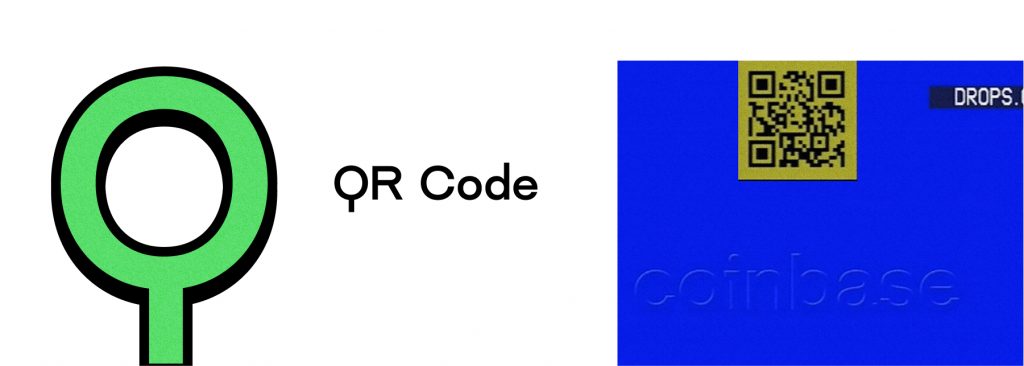
– QR Code: A type of two-dimensional barcode that can store various types of information, such as text, numbers, URLs, etc. QR codes can be scanned by cameras or devices to access or display the information. In the context of cryptocurrencies, QR codes are often used to store and share addresses, private keys, mnemonic phrases, etc.
## R

– Rally: A term that refers to a significant and sustained increase in the price or value of an asset, such as a cryptocurrency, a market or an industry. A rally can be caused by various factors, such as positive news, events, trends, sentiment, demand, etc.
– Rekt: A slang term that refers to being ruined or destroyed financially due to losses from trading or investing in cryptocurrencies. The term is derived from a misspelling of the word “wrecked”. The term is often used to mock or express sympathy for someone who has suffered a large loss or made a bad decision. For example, “He sold his Bitcoin at $10,000 and now it’s $50,000. He got rekt.”
– Resistance: A term that refers to a price level or range where the selling pressure of an asset, such as a cryptocurrency, is higher than the buying pressure, resulting in difficulty or inability to break above it. Resistance acts as a barrier or ceiling that prevents the price from rising further. Resistance can be determined by various methods, such as technical analysis, historical data, psychological factors, etc.
– ROI: An acronym for Return On Investment, which is a measure of the profitability or performance of an investment. ROI is calculated by dividing the net profit or loss of an investment by the initial cost or value of the investment. ROI is usually expressed as a percentage or a ratio. For example, if someone bought Bitcoin for $10,000 and sold it for $15,000, their ROI is 50% or 1.5x.
– Rug Pull: A type of scam or fraud that involves creating and selling a new token or coin with false or exaggerated promises and then suddenly withdrawing or stealing the funds from the investors or buyers. A rug pull can also occur when a liquidity provider removes their funds from a decentralized exchange (DEX) or a liquidity pool, causing the price and value of the token or coin to collapse.
## S
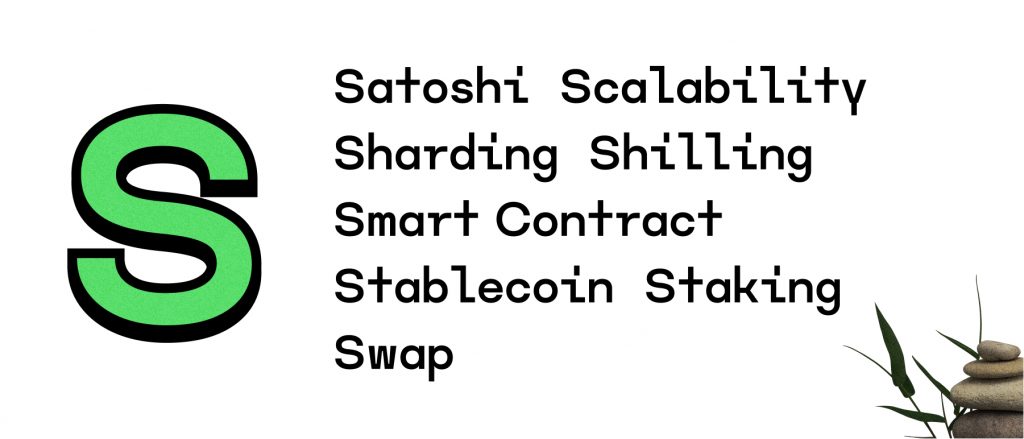
– Satoshi: The smallest unit of Bitcoin, equivalent to 0.00000001 BTC. The term is named after Satoshi Nakamoto, the anonymous creator of Bitcoin. The term is also used to refer to the person or group behind the pseudonym Satoshi Nakamoto.
– Scalability: The ability of a system or network to handle an increasing amount of work or demand without compromising its performance or efficiency. Scalability is an important issue for cryptocurrencies, as they need to be able to process and accommodate a large number of transactions and users without causing delays, congestion or high fees.
– Sharding: A technique that involves splitting or dividing a large database or network into smaller and more manageable parts or shards. Sharding can improve the scalability, speed and efficiency of a system or network by distributing the workload and data among multiple nodes or servers. Sharding is often used in conjunction with other techniques, such as parallel processing, consensus algorithms, etc.
– Shilling: A term that refers to the act or practice of promoting or hyping up a cryptocurrency, a project, a market or an industry in order to influence the perception and behavior of the public. Shilling can be done by various parties, such as developers, influencers, marketers, investors, etc. Shilling can be done for various reasons, such as increasing awareness, adoption, demand, price, etc.
– Smart Contract: A self-executing contract that is written in code and stored on a blockchain network. A smart contract can facilitate, verify and enforce the terms and conditions of an agreement between two or more parties without the need for intermediaries or third parties. A smart contract can perform various functions, such as transferring funds, issuing tokens, executing transactions, etc.
– Stablecoin: A type of cryptocurrency that is designed to maintain a stable value or peg to another asset, such as a fiat currency, a commodity, an index, etc. Stablecoins aim to provide the benefits of cryptocurrencies, such as speed, security and transparency, without the drawbacks of volatility and unpredictability. Stablecoins can be backed by various methods, such as collateralization (reserve), algorithm (seigniorage) or hybrid.
– Staking: The process of locking up or holding a certain amount of cryptocurrency in a wallet or node to participate in the consensus mechanism of a proof-of-stake (PoS) network. Staking allows users to become validators who can create and validate new blocks on the blockchain. Validators are rewarded with newly created coins and transaction fees for their service. Staking can also provide various benefits, such as passive income, governance rights, security, etc.
– Supply: The amount of cryptocurrency that exists or is available in the market. Supply can be classified into different types, such as total supply, maximum supply, circulating supply, etc. Total supply is the amount of cryptocurrency that has been created or mined so far. Maximum supply is the amount of cryptocurrency that can ever be created or mined according to the protocol or algorithm. Circulating supply is the amount of cryptocurrency that is currently available in the market and can be traded or used.
– Swap: A term that refers to the act or process of exchanging one cryptocurrency for another cryptocurrency without using an intermediary or a third party. Swaps can be done on various platforms or services, such as decentralized exchanges (DEX), automated market makers (AMM), liquidity pools, etc.
## T

– Token: A type of digital asset that represents a unit of value or utility on a blockchain network or platform. Tokens can have various functions and purposes, such as payment, reward, governance, access, etc. Tokens can be created and issued by various methods, such as smart contracts, protocols, standards, etc. Tokens can be classified into different types, such as utility tokens, security tokens, governance tokens, etc.
– Transaction: A transfer or exchange of value or information between two or more parties on a blockchain network. A transaction usually involves sending or receiving cryptocurrency, data, messages, etc. A transaction is recorded and verified on the blockchain by the network participants, who are also known as nodes. A transaction can have various attributes and statuses, such as amount, fee, hash, confirmation, etc.
– Transaction Fee: A fee that is paid by the sender or user of a transaction to the network or platform that processes and validates the transaction. Transaction fees are usually deducted from the amount of cryptocurrency that is sent or received in a transaction. Transaction fees are used to incentivize and reward the network participants who secure and maintain the network, such as miners or validators. Transaction fees can vary depending on various factors, such as network congestion, transaction size, priority, etc.
## U
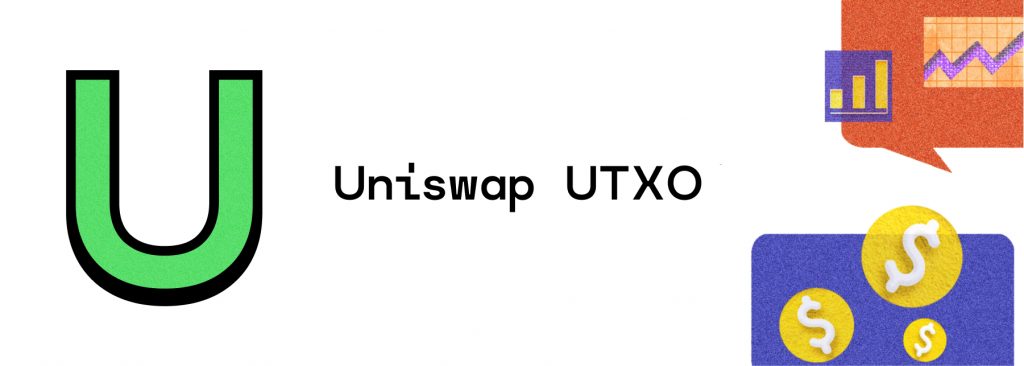
– Uniswap: A decentralized protocol that allows users to swap or exchange any ERC-20 tokens on the Ethereum network without intermediaries or third parties. Uniswap uses an automated market maker (AMM) model that relies on liquidity pools to provide liquidity and determine prices for each token pair. Uniswap also has its own native token called UNI, which is used for governance and reward purposes.
– UTXO: An acronym for Unspent Transaction Output, which is a type of data structure that represents the amount of cryptocurrency that has not been spent or used in a previous transaction. UTXOs are stored and tracked on the blockchain and can be used as inputs for new transactions. UTXOs are used by some cryptocurrencies, such as Bitcoin and Litecoin.
## V

– Validator: A type of node that participates in the consensus mechanism of a proof-of-stake (PoS) network by creating and validating new blocks on the blockchain. Validators are required to stake or lock up a certain amount of cryptocurrency in order to become eligible and active validators. Validators are rewarded with newly created coins and transaction fees for their service. Validators can also be penalized or slashed for misbehaving or violating the rules of the network.
– Volatility: A measure of how much the price or value of an asset fluctuates over time. Volatility is usually expressed as a percentage or a standard deviation. Volatility indicates the level of risk and uncertainty associated with an asset. Volatility can be influenced by various factors, such as supply and demand, news, events, trends, sentiment, etc. Cryptocurrencies are known to have high volatility compared to other assets, such as stocks, bonds, commodities, etc.
## W

– Wallet: A software or hardware device that allows users to store, send and receive cryptocurrencies. A wallet usually consists of two components: a public key and a private key. The public key is used to receive payments and can be shared with anyone. The private key is used to send payments and must be kept secret and safe by the user. A wallet can support one or more cryptocurrencies depending on its type and compatibility.
– Whale: A term that refers to an individual or entity that holds a large amount of cryptocurrency or has a significant influence on the market. Whales can affect the price and liquidity of cryptocurrencies by buying or selling large amounts of coins in a single or multiple transactions. Whales can also manipulate the market by creating fake orders, spreading rumors, coordinating with other whales, etc.
– White Paper: A document that provides a detailed description and explanation of a cryptocurrency project or platform. A white paper usually covers various aspects of the project or platform, such as its vision, mission, goals, features, functions, benefits, challenges, roadmap, team, etc. A white paper is often used as a marketing tool or a source of information for potential investors, users or partners.
## X
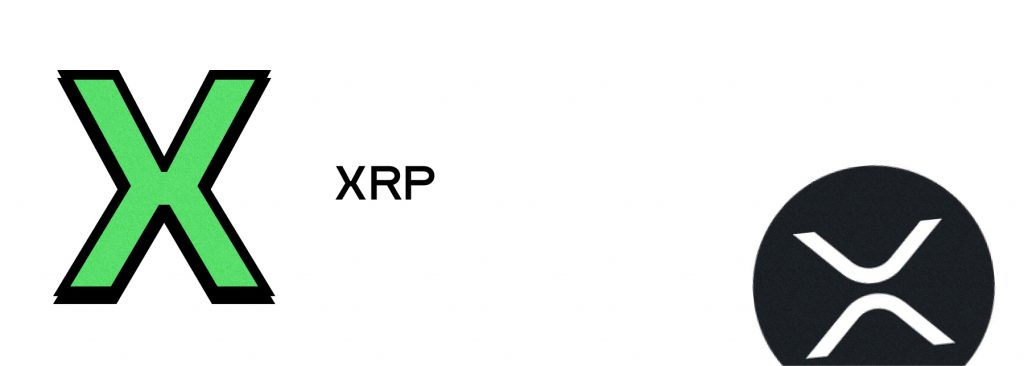
– XRP: The native cryptocurrency of the XRP Ledger, which is a decentralized network that facilitates fast and cheap cross-border payments. XRP is used as a bridge currency that can be exchanged for any other currency or asset on the network. XRP is also used to pay for transaction fees and network operations on the network. XRP is issued and managed by Ripple, a company that provides various products and services for the global payment industry.
## Y

– Yield Farming: A type of activity or strategy that involves lending or locking up cryptocurrencies in various platforms or protocols in order to earn interest or rewards. Yield farming is often associated with decentralized finance (DeFi), which offers various services and products that allow users to earn passive income from their cryptocurrencies. Yield farming can involve various risks and complexities, such as liquidity, volatility, impermanent loss, smart contract bugs, etc.
## Z
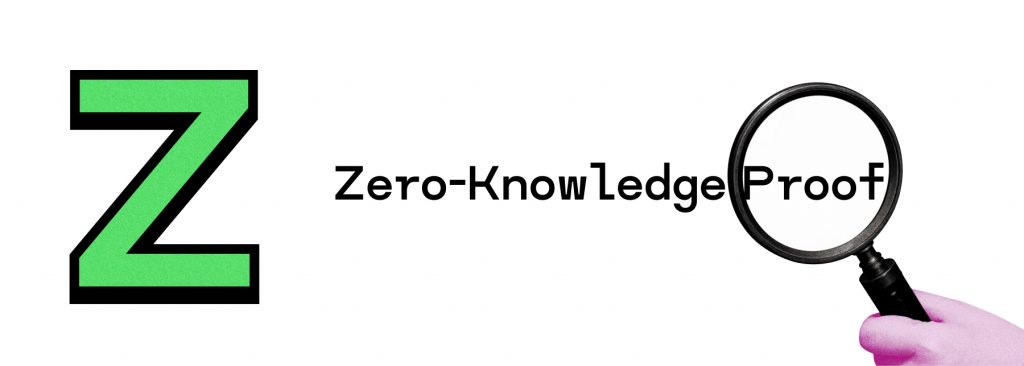
– Zero-Knowledge Proof: A type of cryptographic technique that allows a party to prove to another party that they know or possess a certain piece of information without revealing the information itself. Zero-knowledge proofs can be used for various purposes, such as authentication, verification, privacy, anonymity, etc. Zero-knowledge proofs are used by some cryptocurrencies, such as Zcash and Monero.
Conclusion
We have covered a lot of crypto terms and jargon in this article, but this is not an exhaustive list. There are many more terms and concepts that you may encounter as you explore the crypto world.
The crypto space is constantly evolving and innovating, so new terms and jargon may emerge or change over time. Therefore, it is important to keep learning and staying updated with the latest developments and trends in the crypto industry.
We hope that this article has helped you to understand some of the basic and essential crypto terms and jargon that you need to know to navigate the crypto world. Whether you are a beginner or an expert, having a good grasp of the crypto terminology can help you to communicate, analyze and make better decisions in the crypto space.
Thank you for reading, and happy crypto learning!
In case, you liked reading this article, you’ll surely won’t want to miss out on the following resources:
- How to Create a MetaMask Wallet?
- All You Need to Know About Leverage Trading in Crypto
- Hong Kong: The Upcoming Crypto Hub
Adios!






+ There are no comments
Add yours